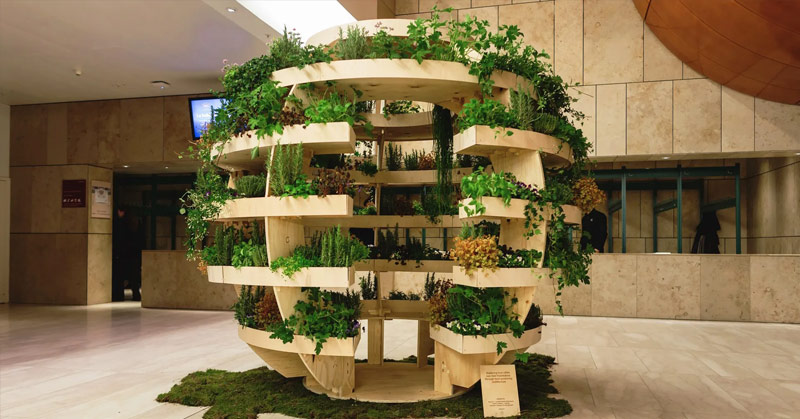There are a lot of issues with modern-day agriculture. It requires hundreds of acres of land, millions of gallons of water, and massive amounts of fossil fuels. Large, mono-crop operations are more susceptible to pests and disease, so they must be treated with herbicides and pesticides to prevent crop losses, and they deplete the soil, which in turn decreases the nutritional value of the food that is being grown. Now, a concept called a garden sphere could help feed entire communities.
For all of these reasons, and many more, modern agriculture is not only damaging the health of our environment, but it is affecting our own health as well. This begs the question: how can we feed our growing population nutritious food without damaging our environment?
Scientists and researchers around the world have been working to find solutions to this problem, and not too long ago one group from an IKEA lab came up with an innovative answer.
The IKEA Garden Sphere
The furniture giant IKEA released the blueprints for the Grow Room, which could be downloaded for free.
The spherical structure was designed in the company’s lab Space 10 by architects Sine Lindholm and Mads-Ulrik Husumto. The lab’s purpose is to develop innovative and ground-breaking solutions for the future, which is where the inspiration for this product came from.
The Glow Room has multiple tiers designed to sustainably grow food for an entire community. There are seventeen steps involved in building the structure, and all you need is two rubber hammers, sixteen sheets of plywood, and a visit to a local fab lab with a CNC milling machine.
Unlike other IKEA products, the parts do not come in boxes or flatpacks with all the necessary tools. Instead, users can download the files provided by the company to create the plywood pieces, then take it to a fab lab to be cut professionally. Once they have the pieces ready to go, they can assemble them following the instructions provided online.
The Growroom is intended mainly to be used in neighborhood gardens in cities, however, if you are particularly ambitious, you could build one for your own backyard.
“This means most people — in theory — could produce almost anything themselves,” the organization said in a press release.
Creating Healthy Communities
According to their website, Space10 is “a research and design lab on a mission to enable a better everyday life for people and planet.”
Prioritizing a collaborative approach, they research and design innovative solutions to major shifts that are expected to take place within society, and that will affect both people and the planet in the years to come.
The Growroom was designed to enable people to grow food locally and sustainably.
“An urban farm pavilion and example of food-producing architecture, it was designed to trigger conversations about how to meet the rising demand for food by growing it in our cities.”
The makers of the product considered problems with our current agricultural system, citing how outsourcing our food production to large farms that are far beyond city limits means that it must travel hundreds and sometimes thousands of miles to get to us.
The problem, of course, is that cities don’t typically have enough space to grow food. In some cases, even a small community garden plot is not feasible. The Growroom presents a way for fresh food to be grown within city limits and provides people who live in these urban areas with greater access to fresh fruits and vegetables.
“Local food represents a serious alternative to the global food model. It reduces food miles, our pressure on the environment, and educates our children of where food actually comes from. The result on the dining table is just as fascinating.”
Local versions of the Growroom have already been built in Helsinki, Moscow, Rio de Janeiro, San Francisco, Seoul, and Sydney.
Space10 explains that they are designed to act as a small oasis, or “pause” architecture, to allow people in busy cities to connect with nature and to enjoy the smell and taste of the herbs and plants growing within it. It can stand freely in any location and is meant to be an example of contemporary and shared architecture.
Keep Reading: Permaculture Garden Produces 7000 Pounds of Organic Food Per Year on a Tenth of an Acre

